This post may contain affiliate links. Please see our disclosure policy.
Wood sorrel pesto is the perfect way to bring a wild, fresh touch to your meals. It has a bright lemony flavor from the fresh wood sorrel leaves, balanced by the creamy earthiness of hazelnuts and the salty umami in fresh grated parmesan.
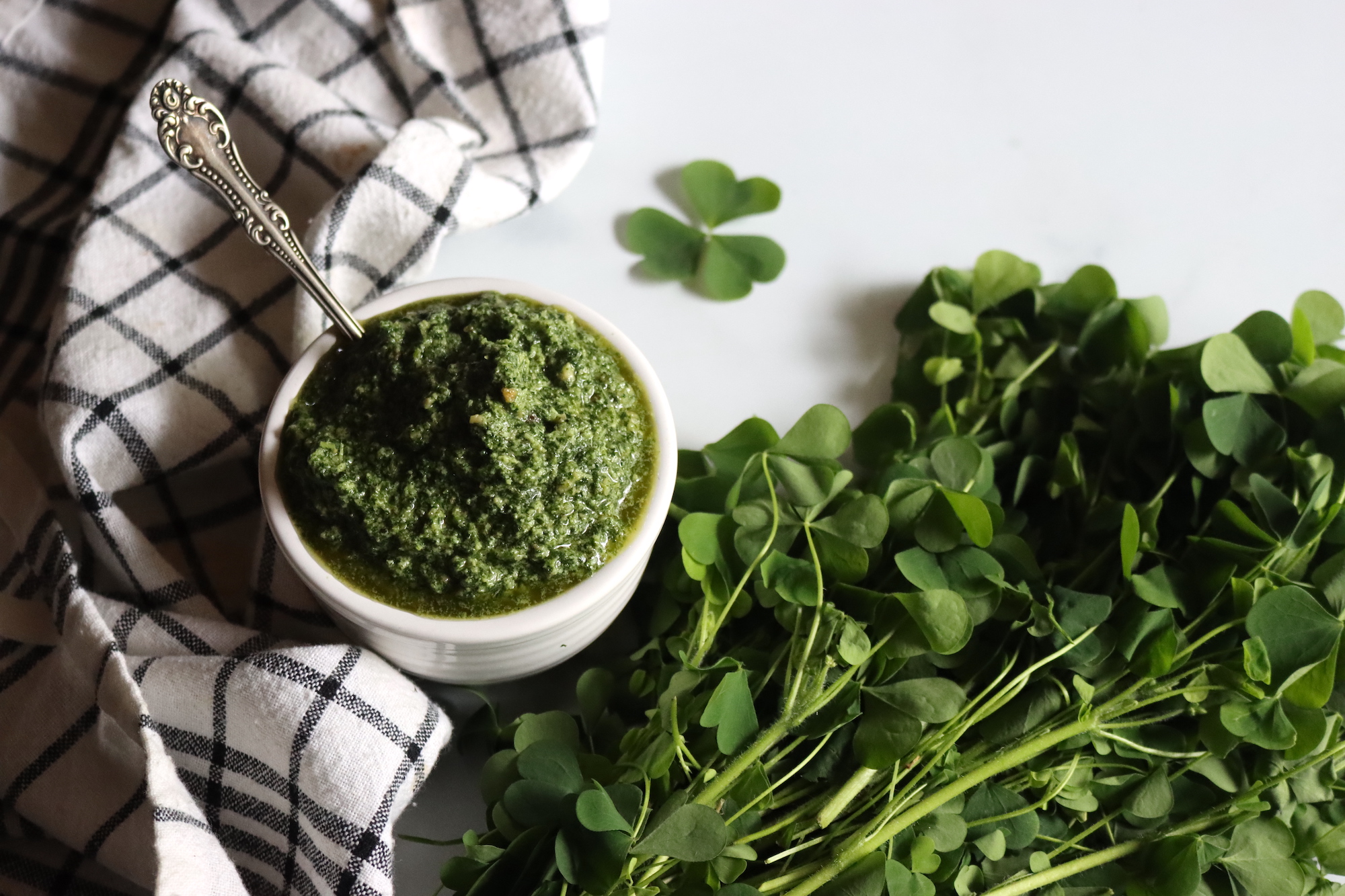
Fresh pesto can be made out of just about any green, wild or cultivated. While basil is the most traditional, there’s no need to limit yourself to flavors you can easily pick up in the grocery store.
Wild wood sorrel is a common garden weed that we harvest by the bucketload from our garden beds each summer. I use it to add a bright lemon flavor to salads, but sometimes, when I have an especially big harvest, I like to make something a little extra special.
This wild weeds pesto is perfect for adding a unique twist to pasta night, and it’s great as a marinade or pizza topper too.
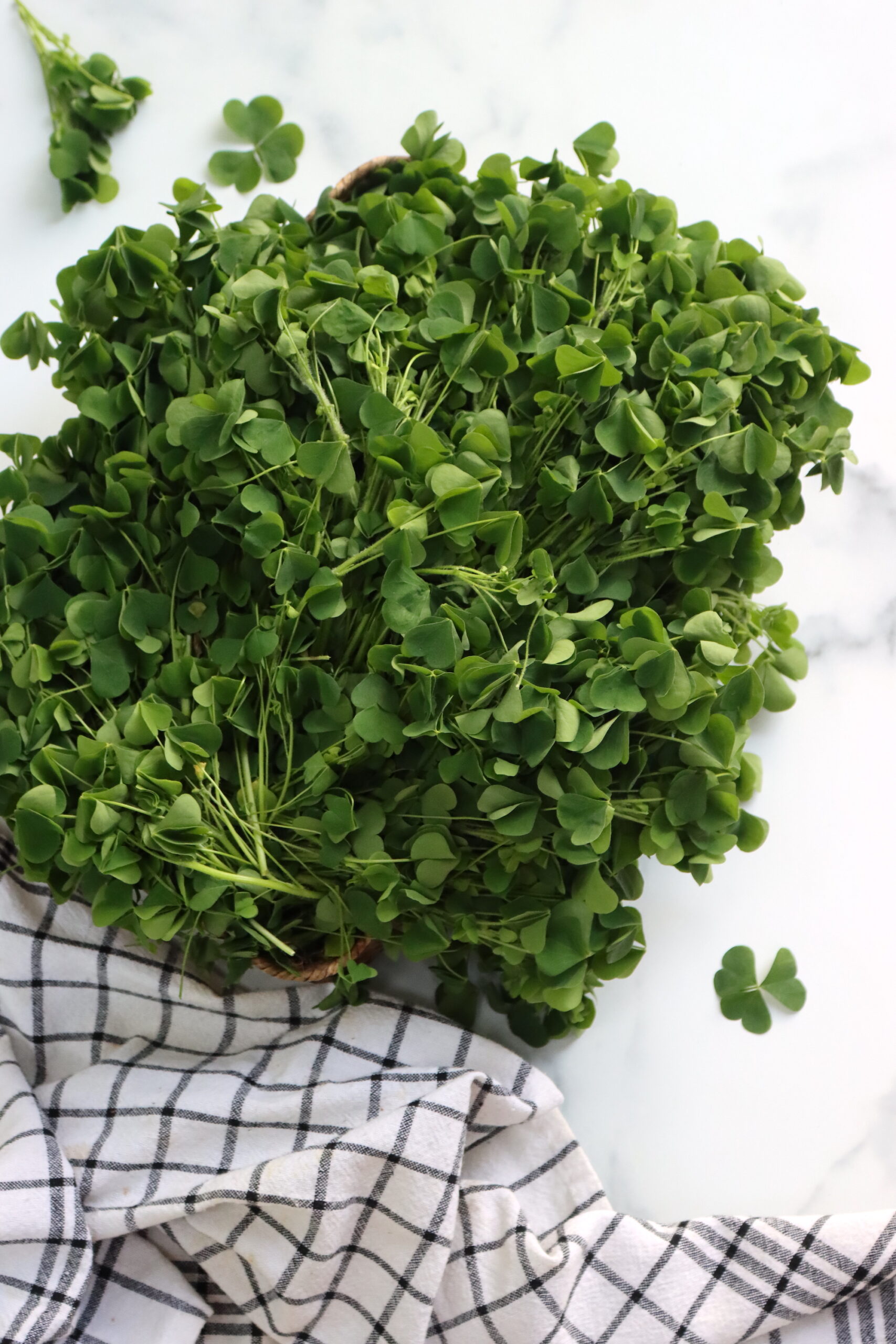
What Is Wood Sorrel?
Common Wood Sorrel (Oxalis stricta) is a small, herbaceous plant that’s native to North America. Found in gardens, lawns, and wild spaces, its leaves are heart-shaped and have a distinctive tangy, lemon-like flavor.
It’s often mistaken for clover, but its vibrant acidity makes it stand out. It’s actually sometimes called “lemon clover” due to it’s unique taste.
Here’s how to identify wood sorrel, so you can be sure you’ve harvested the right wild weeds.
With its refreshing, citrusy flavor and high Vitamin C content, wood sorrel makes an excellent addition to your meals, and its unique flavor works wonderfully in this pesto recipe. The tartness of the wood sorrel balances beautifully with the richness of the nuts and olive oil, offering a completely fresh take on the traditional basil pesto.
You can also use other species of wood sorrel (Oxalis sp), such as Oxalis acetosella. It also goes by the name “wood sorrel,” and that one is actually found in shady woodlands and has a similar flavor, though slightly less acidic and intense.
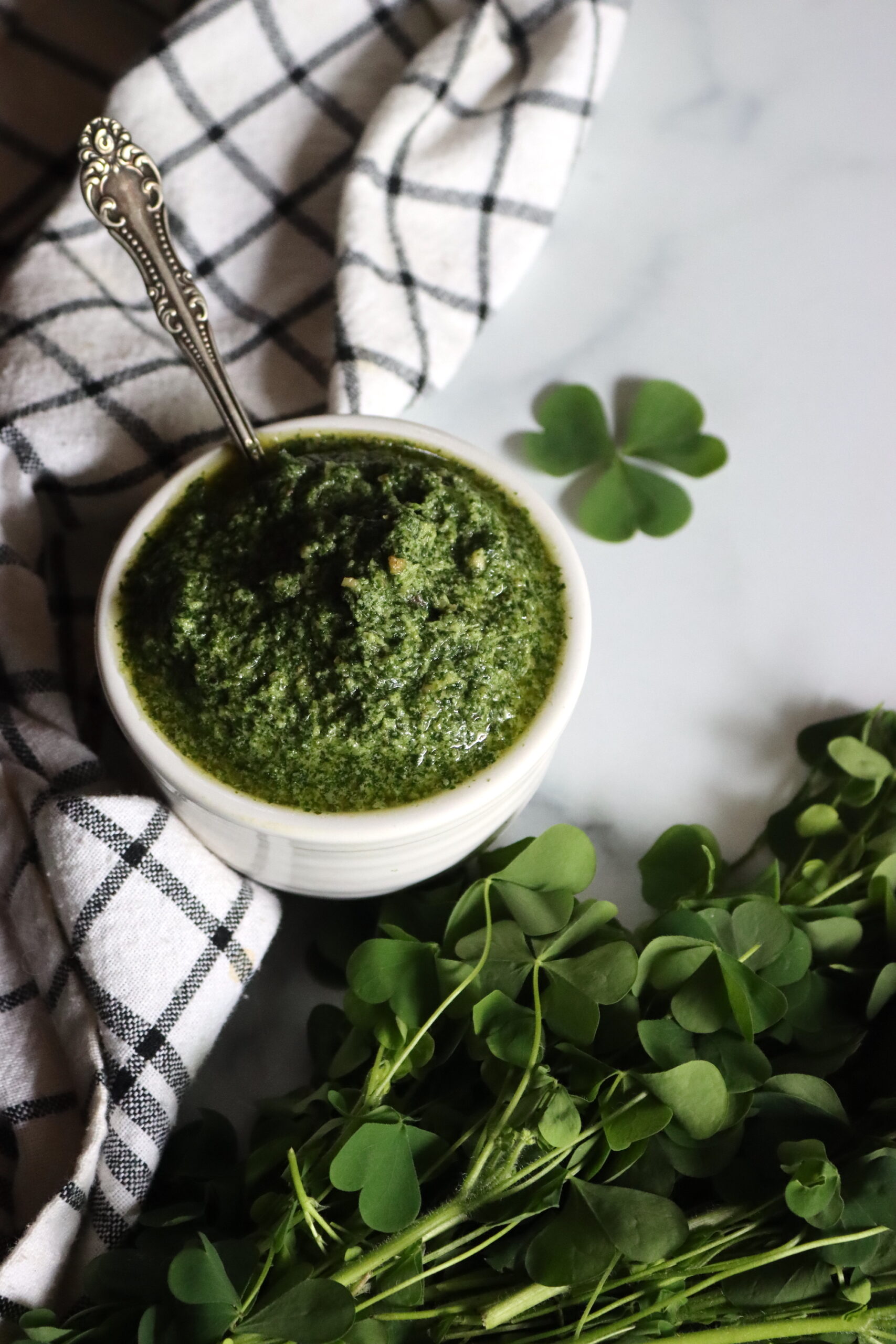
Ingredients for Wood Sorrel Pesto
To make about 1 to 1 1/2 cups of pesto (or enough for a pasta dinner for a family), you’ll need the following:
- ½ cup Marcona almonds or hazelnuts (or other nuts)
- 1 tsp salt
- 1 clove garlic
- 2 cups wood sorrel leaves
- ½ cup olive oil
- 1 teaspoon lemon zest
- 1 cup grated Parmesan (about 100g or 3 oz)
The main thing here is fresh wood sorrel, or really sorrel of any kind. You can use cultivated sorrel here as well, as it has a similar flavor.

Traditional pesto recipes often use pine nuts, but we’ve swapped them out for either hazelnuts or marcona almonds in this recipe.
Hazelnuts add a slightly sweeter, more earthy flavor, which beautifully complements the tartness of the wood sorrel. They also bring a bit more texture to the pesto, offering a satisfying crunch that pairs perfectly with the smoothness of the olive oil and the creaminess of the Parmesan.
Marcona almonds are a bit more expensive, but they have a more neutral flavor, without the earthy/woodsy flavor you get from hazelnuts.
I’ve used both with great results.
Honestly, feel free to use whatever nuts you have on hand. Pine nuts work wonderfully for a neutral flavor, though they’re often a bit pricey. Good substitutes are sunflower seeds, pumpkin seeds, and cashews. All add a wonderful creaminess and body to the finished pesto, though hazelnuts do work exceptionally well with wood sorrel in particular.
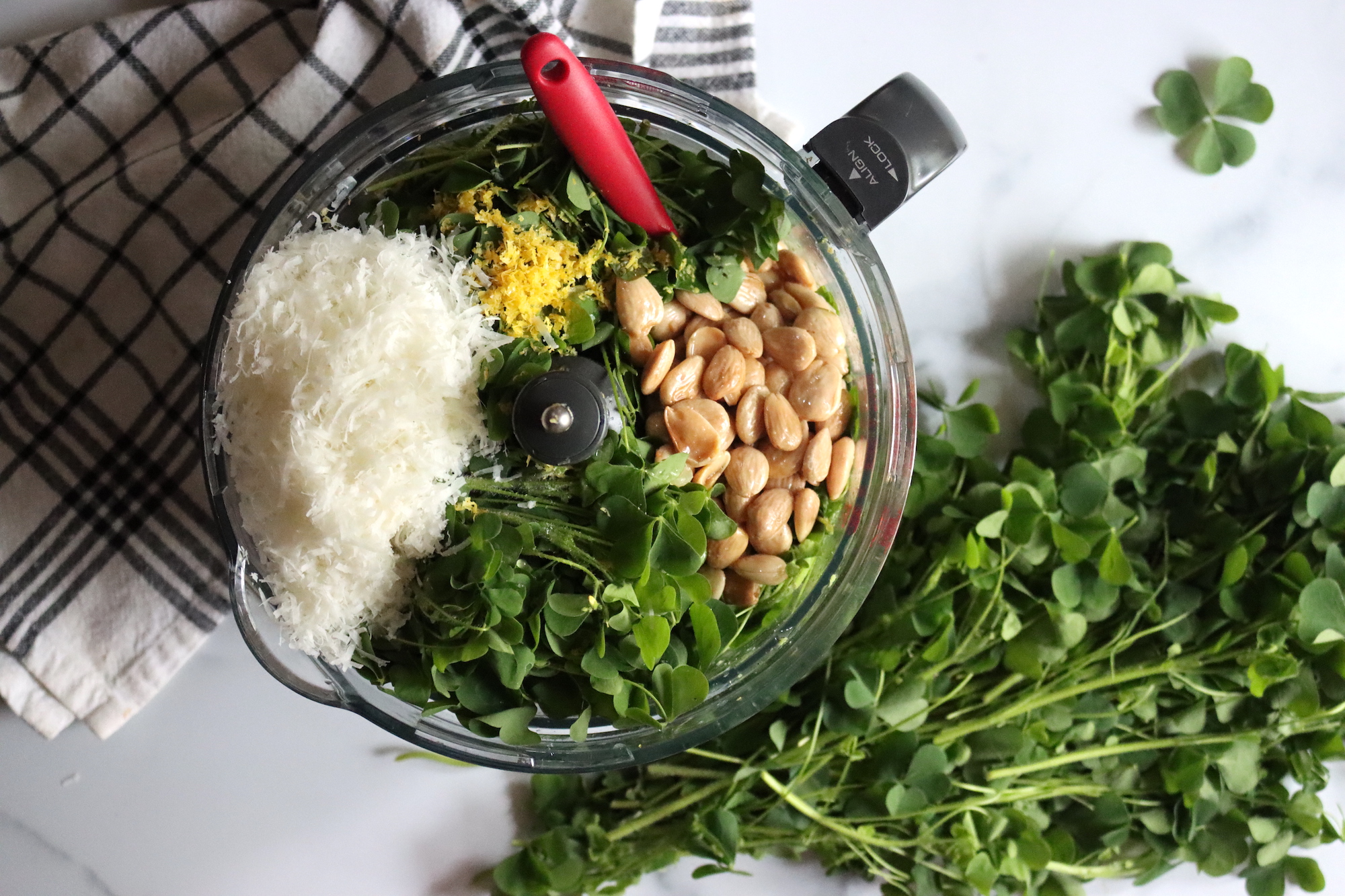
How to Make Wood Sorrel Pesto
Making wood sorrel pesto is easy and similar to making any other pesto. All you need is a food processor (or a mortar and pestle, if you’re feeling traditional and patient), and you’re good to go. The process is straightforward, but there are a few key steps to ensure your pesto has the right texture and balance of flavors.
Start by processing the hazelnuts and kosher salt until the nuts are finely ground. This helps to break down the hazelnuts into small pieces, which will make the pesto smoother. Add the garlic and process again until the mixture is uniform. The garlic adds a savory depth of flavor that complements the fresh sorrel.
Next, add the wood sorrel in batches. About half a cup at a time is perfect. Process it until the sorrel is finely chopped and well combined with the nuts and garlic. You want to make sure the sorrel is fully incorporated, as this will give your pesto its signature zesty flavor.
With the machine running, slowly drizzle in the olive oil. This helps to create a smooth, emulsified pesto. If you prefer a looser sauce, feel free to add more olive oil until it reaches your desired consistency.
Finally, stir in the lemon zest for a fresh, citrusy punch and the grated Parmesan for a rich, savory depth. Season to taste with salt, adjusting the flavor as needed.
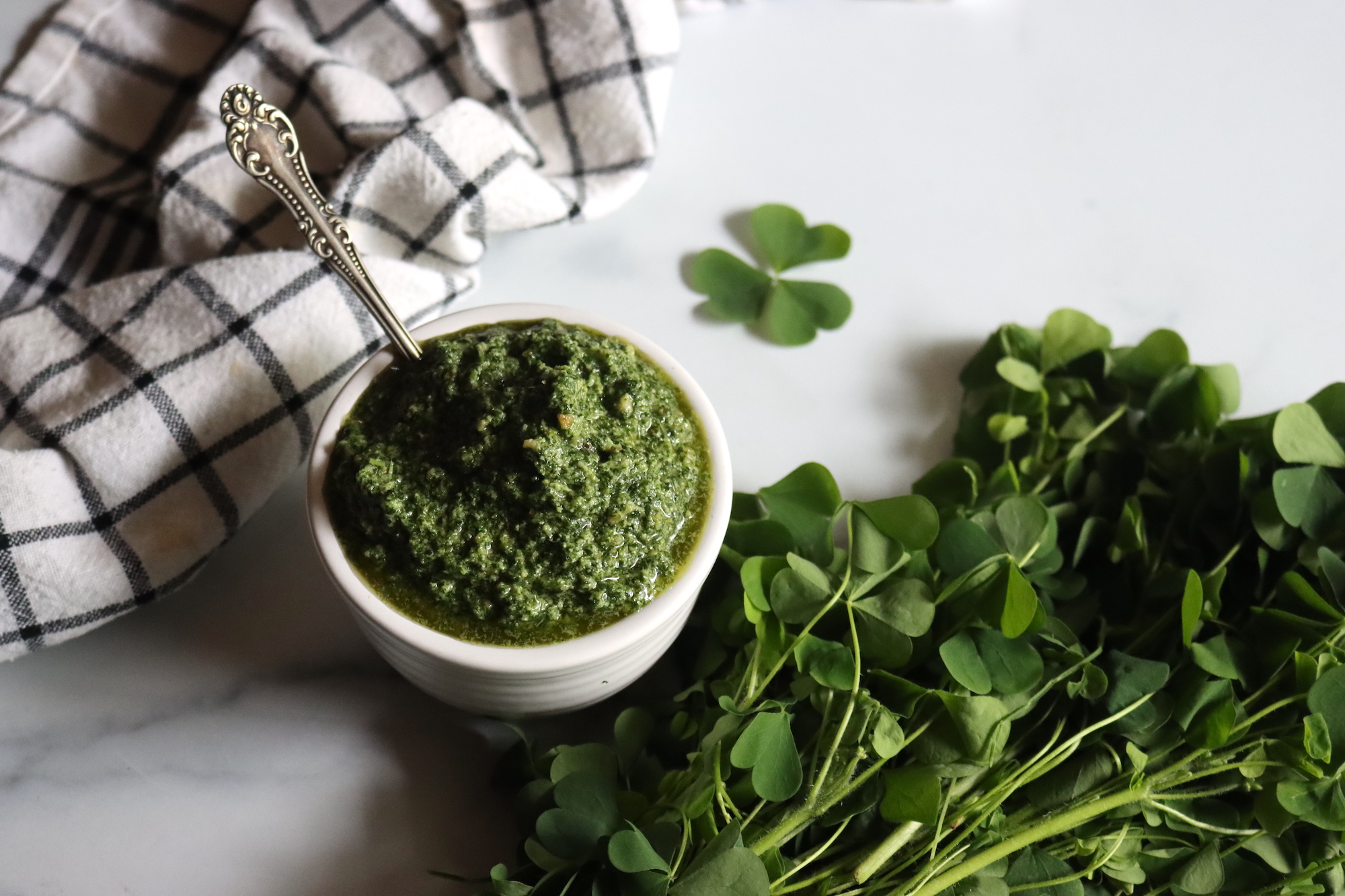
How to Use Wood Sorrel Pesto
Wood sorrel pesto works well anywhere you’d use regular pesto, but it has a unique flavor and extra kick from the tangy wood sorrel leaves. The hazelnuts give it a warm earthy flavor, but you can use other nuts (like pine nuts, cashews, sunflower seeds or pumpkin seeds).
Try it on pasta, spread on toasted crusty bread or as a sauce for either grilled meats or veggies.
This pesto can be stored in the fridge for up to a week, or frozen in ice cube trays for longer storage. Simply thaw when you’re ready to use it and enjoy flavor of wild sorrel all year long!
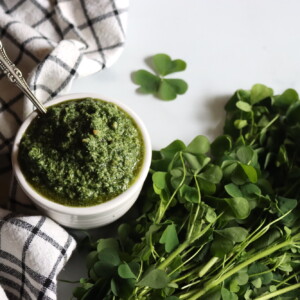
Wood Sorrel Pesto
Ingredients
- ½ cup Marcona almonds or hazelnuts, or other nuts
- 1 tsp salt
- 1 clove garlic
- 2 cups wood sorrel leaves
- ½ cup olive oil
- 1 tsp lemon zest
- 1 cup grated Parmesan, firmly packed
Instructions
- In a food processor (or using a mortar and pestle), process the hazelnuts and salt until finely ground. Add the garlic and process until the mixture is uniform.
- Add the wood sorrel, about ½ cup at a time, processing until finely ground.
- With the processor running, slowly drizzle in the olive oil until the pesto reaches your desired consistency.
- Stir in the lemon zest and grated Parmesan. Season with salt to taste, if needed.
- Store in an airtight container in the refrigerator until ready to use. It’ll keep about 1 week in the fridge, or up to 6 months in the freezer.
Notes
Nutrition
Nutrition information is automatically calculated, so should only be used as an approximation.
Pesto Recipes
Looking for more garden fresh and wild weed pesto recipes?
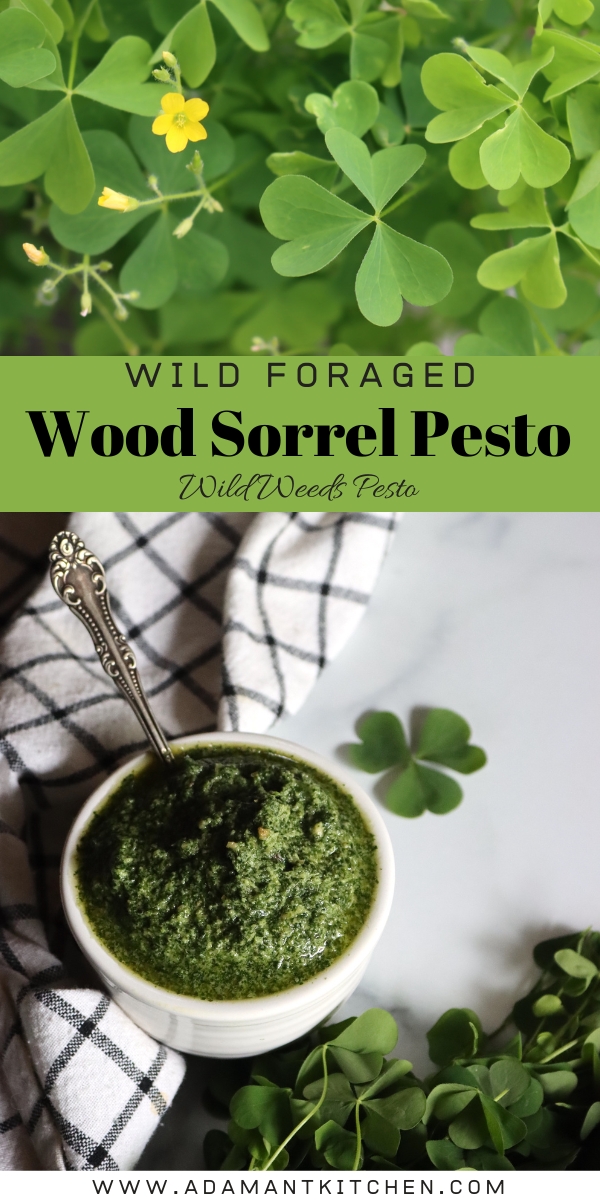
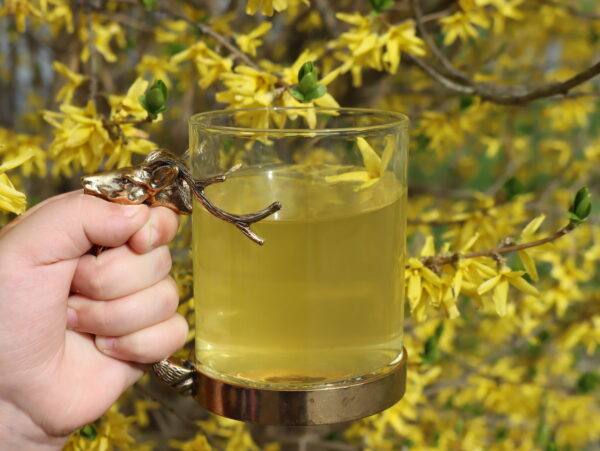
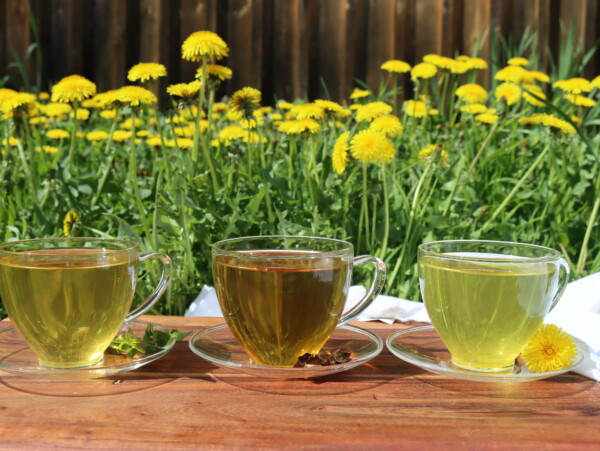
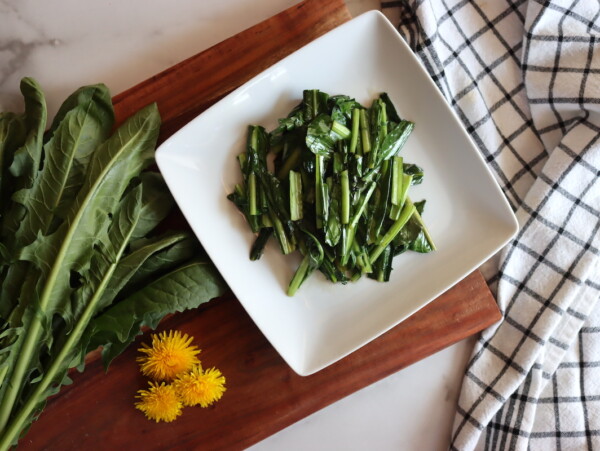
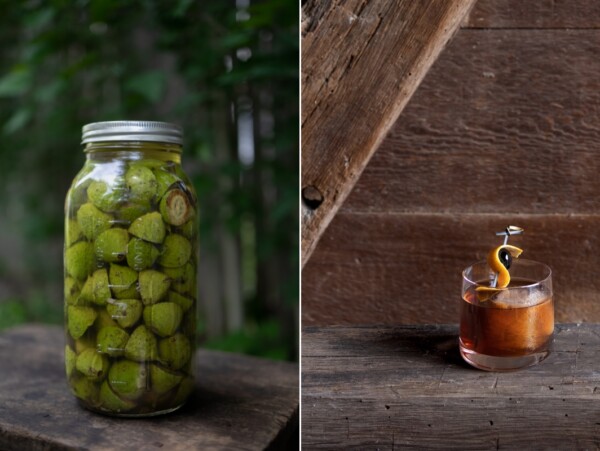
I followed this to a t but replaced the Parm with nutritional yeast and it was lovely! Wanted to share for anyone that might be wondering if this can be made dairy free 😁
Thanks for that, I’ve never made it dairy free but that sounds like a great substitution!
Excellent recipe! I added a little squeeze of lemon at the end as my almond to sorrel ratio was off.